Mobile data traffic increases rapidly, and the end of that trend is not yet in sight: it is expected that by 2022, seven times as much data will be transferred via mobile networks than in 2017. In order to be able to keep sending this gigantic stream of bits through the air, it is necessary to use more and more different frequencies. And future generations of smartphones have to be adapted accordingly.
Most smartphones contain a handful of antennas - for WiFi, Bluetooth, GPS and 4G - tucked away in a far corner of the device, for instance wedged in between the motherboard and the phone’s casing. For that reason alone, fitting antennas that can handle all the frequencies for 5G, the new standard for mobile data traffic, is no mean feat.
“Current smartphones can often switch between a few dozens of frequencies already,” says Sander Bronckers, who obtained his PhD degree cum laude in Electrical Engineering last month. “That’s done with a broadband antenna in combination with several frequency filters.” However, this is not a very flexible solution, he explains, because you’re stuck with precisely those frequencies that the installed filters allow to pass. “Also, these filters are relatively expensive and this solution is quite energy-consuming.” And the latter disadvantage affects the user, because the battery wears down quickly.
Adjustable
That is why Bronckers looked into an alternative solution in which the smartphone’s antenna system is flexibly tuned to frequencies it receives and sends, using a series of adjustable capacitors. “The idea is that you have less losses when you use more of these capacitors,” he explains. “The difficulty, however, is that calculating a system with several components took too much time using the existing methods.”
In order to still find the correct settings for the capacitors, Bronckers only looked at the losses in those components themselves. “The trick is to make a distinction between the right solutions, and settings that suffer from local resonances which prevent the antenna from working correctly.” The result of his model looks promising: a first run showed a doubling of efficiency compared to the antennas in the smartphone he used as reference.
Dummy head
But that is not the end of the story: in theory, a phone might have a good reception in empty spaces, but in practice, the direct environment - such as the user’s body - is a considerable factor of influence. That is why telephone antennas are subjected to extensive measurements in special measurement rooms, in the presence of dummies. “You can order dummy heads specifically for this purpose at a Swiss company, filled with a gel that has the right electromagnetic features to simulate a human head.”
Here, too, Bronkcers, who is an assistant professor at EE by now, stepped off the beaten track. “Such measurements usually take place in anechoic or ‘dead’ chambers, without electromagnetic reflections. That just happens to be the best way to measure radiation patterns. But determining antenna efficiency actually works much better in a reverberation room, with maximal reflections (known as an ‘echo chamber’ in acoustics, ed.).”
In a dead room, you need to move the dummy and the telephone around together in order to measure from every angle, with the disadvantage of having to use a kind of movable pedestal, which influences the measurements. You don’t need that in an echo chamber because there, it’s possible to create a uniform distribution of the electromagnetic field by moving large metal objects (so-called paddles). “Because of the reflections, you kind of measure from all sides already by nature, so that you don’t need to move around the dummy but simply place it on a piece of foam rubber which has no influence on the measurements.” In the coming period, Bronckers will focus mostly on perfecting these kinds of measurement techniques in his capacity as assistant professor.
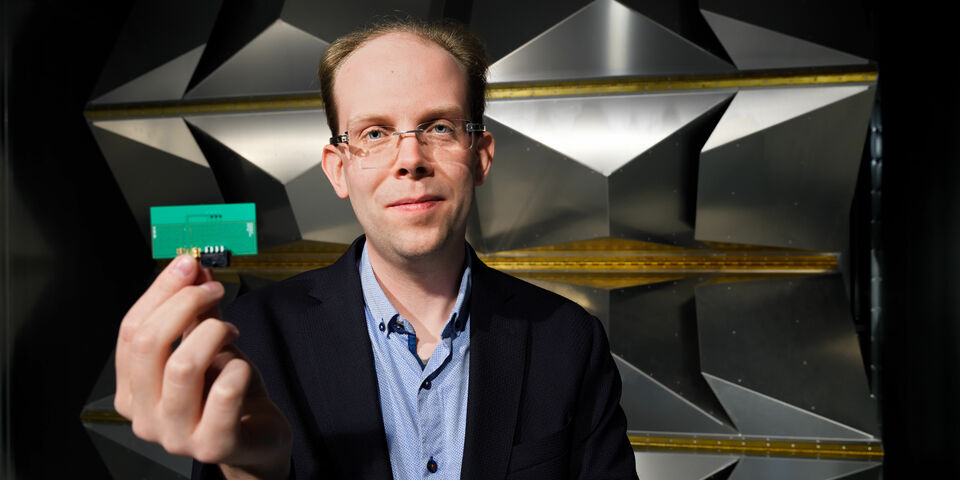

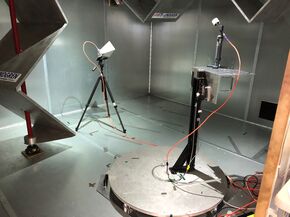
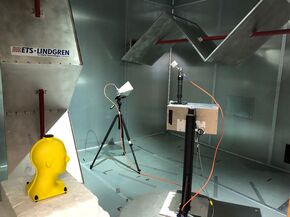
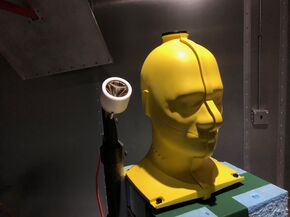
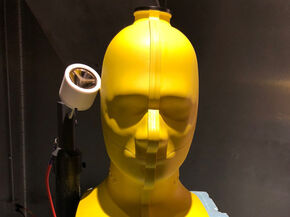
Discussion